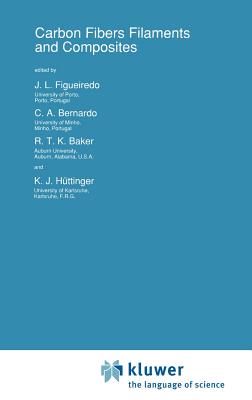
Carbon Fibers Filaments and Composites (NATO Science Series E: #177)
Description
Conventional synthetic materials, like metals, ceramics or glass, are usually isotropic substances, and their suitability for structural applications is achieved by morphological design and combination in the macroscopic scale. However, in modem engineering this is often not acceptable. As an alternative, the use of non-homogeneous, anisotropic materials, with significant stiffness and strength only in the directions these mechanical properties are really needed, can lead to enormous material (and weight) savings. This is the case of multiphase systems called composite materials. In these composites, different material parts are added and arranged geometrically, under clearly designed and controlled conditions. Usually, a structure of fibers provides strength and stiffness and a matrix helds them together, whilst providing the geometric form. Carbon fibers are among the high-performance fibers employed in these advanced structural composites, which are profoundly changing many of today's high technology industries. New research and development challenges in this area include upgrading the manufacturing process of fibers and composites, in order to improve characteristics and reduce costs, and modifying the interfacial properties between fibers and matrix, to guarantee better mechanical properties. The interdisciplinary nature of this "new frontier" is obvious, involving chemistry, materials science, chemical and mechanical engineering. Other topics, which more often are treated separately, are also important for the understanding of the processes of fiber production. Carbon filaments is one such topic, as the study of their mechanisms of nucleation and growth is clearly quite relevant to the production of vapour-grown carbon fibers.



















